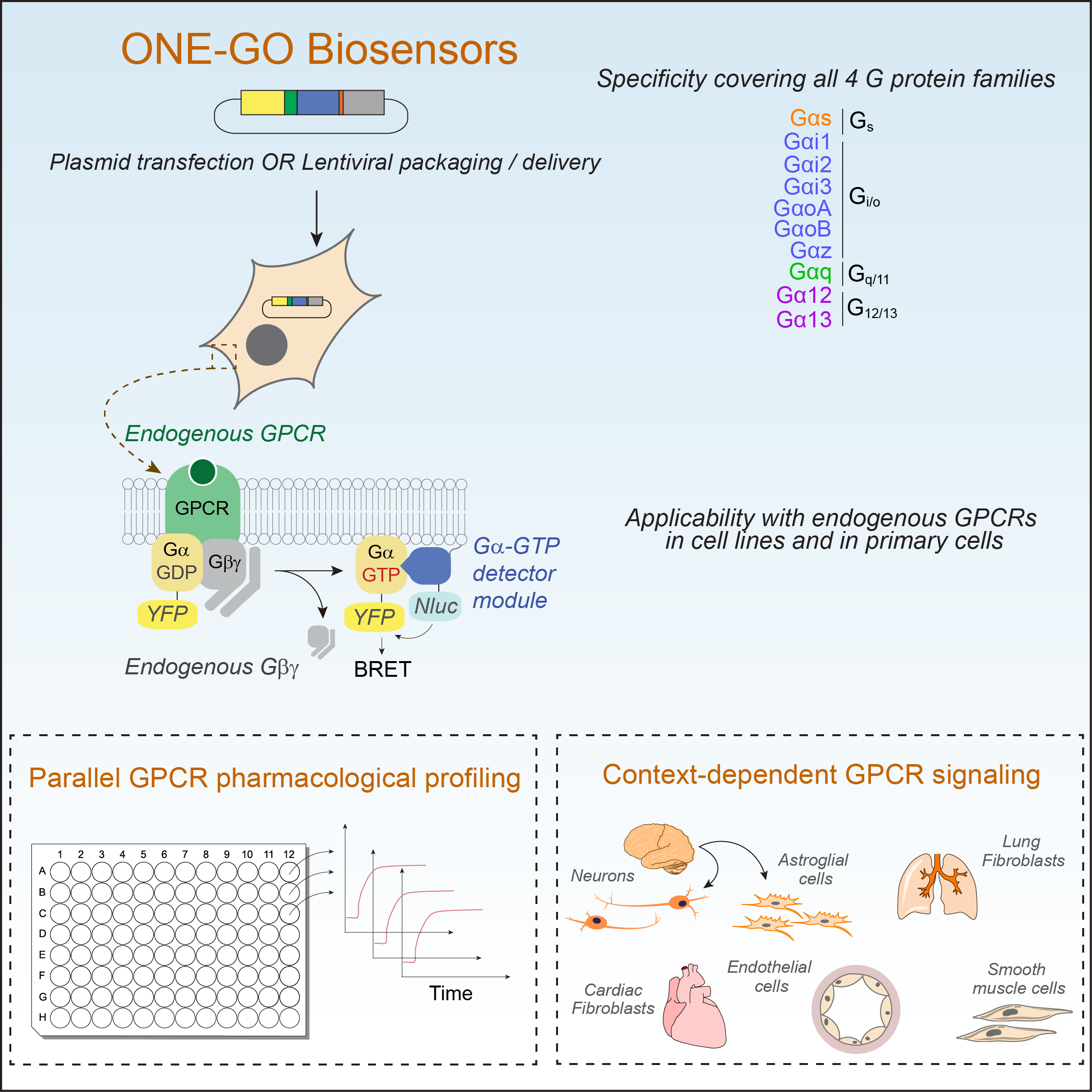
In a first publication, the Garcia-Marcos Lab has recently published the development and implementation of a suite of G protein biosensors broadly applicable to detect GPCR activity in scalable assay formats and in physiologically relevant systems like primary cells. By directly measuring endogenous GPCR activity, these biosensors, named ONE-GO, reveal that responses are frequently dependent on the cell context or state. This resource article has been published in the journal Cell (https://www.sciencedirect.com/science/article/pii/S0092867424000655?via%3Dihub) and all related plasmid reagents are deposited in Addgene (https://www.addgene.org/kits/garcia-marcos-one-go-biosensors/). The work in this paper was led by current PhD student Remi Jnaicot and former postdoc Marcin Maziarz, and includes collaborations with the Layne Lab in our Department and the Wu lab at Stanford.
In a second paper, Mikel has reviewed a lot of the research related to his lab’s work on atypical mechanisms of signaling over the last 15 years.G proteins are molecular switches that relay signals from G protein-coupled receptors across the cell membrane. While it is generally assumed that G proteins, molecular switches that trasnduce signals, are activated exclusively by G protein-coupled receptors (GPCRs), this review summarizes the mounting evidence showing that G proteins can signal via a class of G protein regulator proteins that contain a Gα-binding-and-activating (GBA) motif. The mechanisms and structural basis for this GPCR-independent mechanism of G protein signaling are presented, as well as a description of strategies to manipulate GBA-G protein coupling for research purposes or the potential development of therapeutics. This paper has been published as a commissioned review in the Journal of Biological Chemistry (https://www.sciencedirect.com/science/article/pii/S0021925824001327?via%3Dihub).